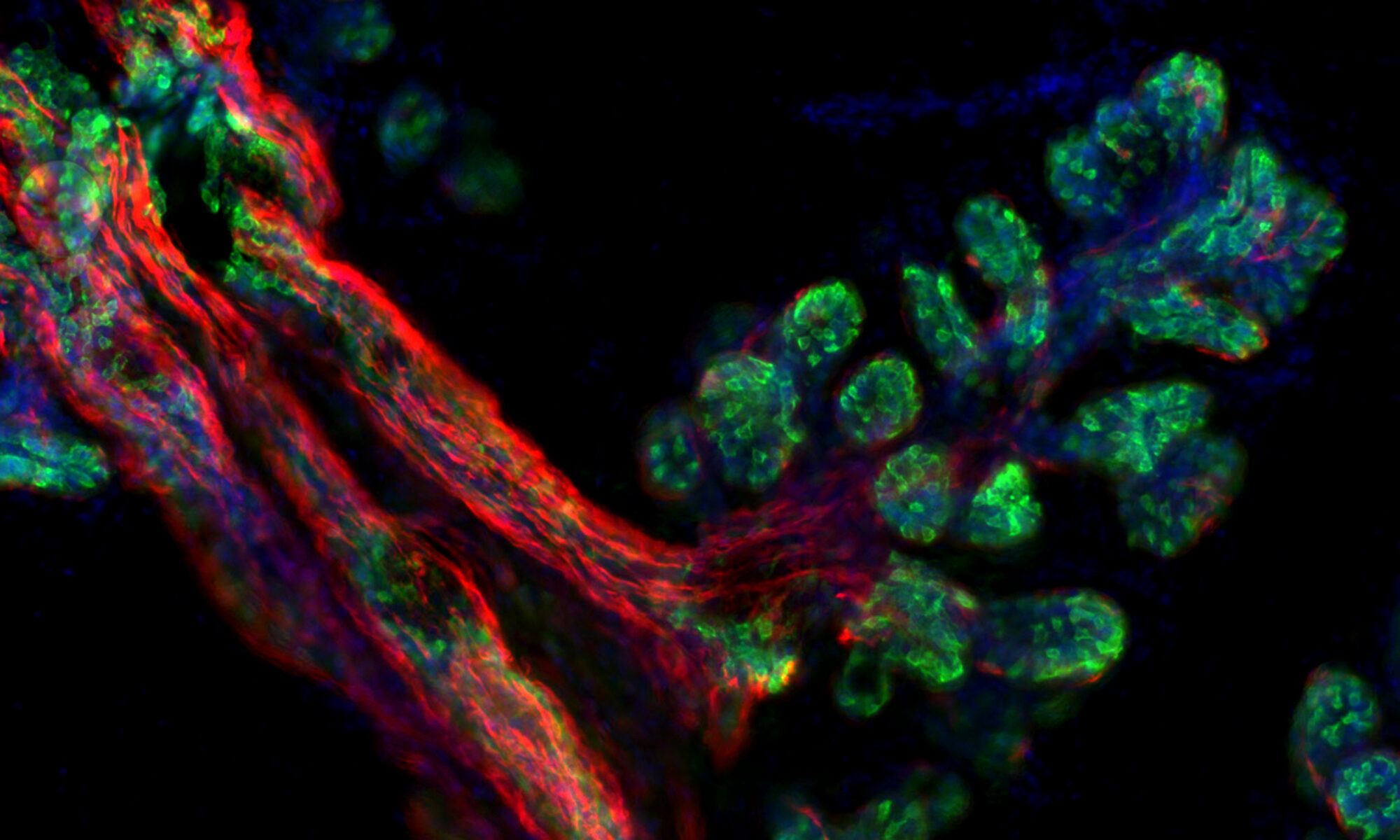Our laboratory addresses one of biology’s oldest and most fundamental questions: How do cells coordinate and cooperate to form and maintain functional tissue? The answer to this critical question is central to our understanding of cancer. In the breast, a difficulty in deciphering this complex problem has been that the number and different types of cells composing this tissue has been clouded with uncertainty, as has their origins and relationships to each other.
This has contributed to a scarcity of context-specific models that are needed for studying breast cancer biology. Research in the Hines laboratory has addressed this insufficiency by improving such models, and through the development of a complex antibody panel and rigorous flow cytometric gating strategy capable of objectively resolving and sorting essentially every major cell type in the breast. This expands significantly the number of primary cell populations commonly isolated from these tissues. Research is geared at understanding how these different cell types interact and influence each other. To this end, we have sequenced RNAs from each population, and have developed (and continue to improve) methods of culturing each cell population for further study.
Using these data, we have developed a ‘cell interaction’ network describing the complex interactions occurring between each of the cell populations and their microenvironments. This network is currently being tested in the laboratory in the normal, ductal carcinoma in situ (DCIS), and tumor contexts. We posit that understanding the molecular and biochemical processes of how epithelial cells communicate with each other, and with their microenvironments, will be key to understanding and effectively treating breast cancer.




